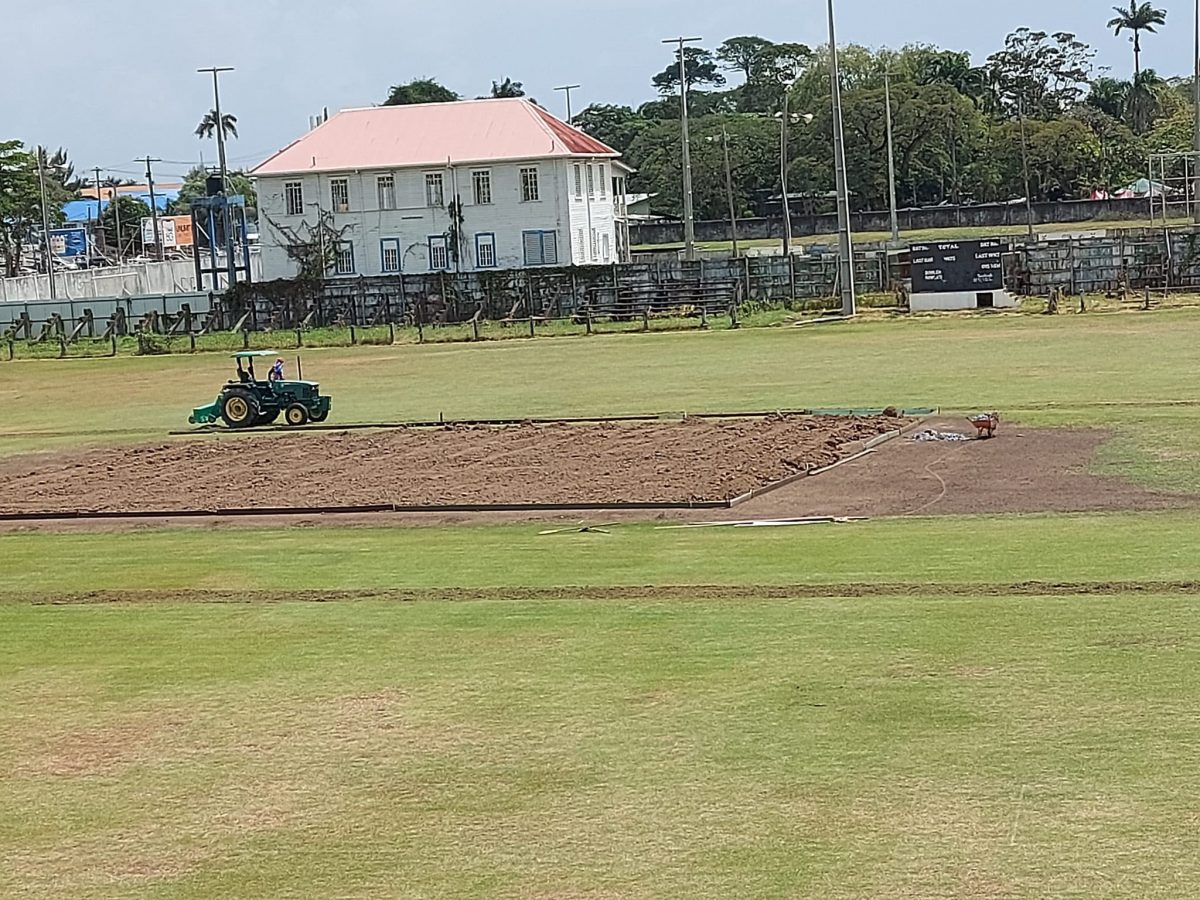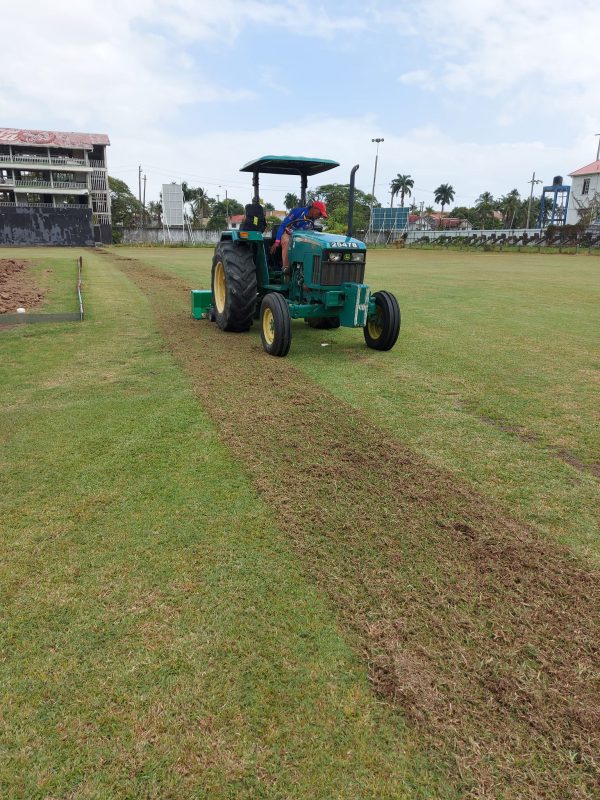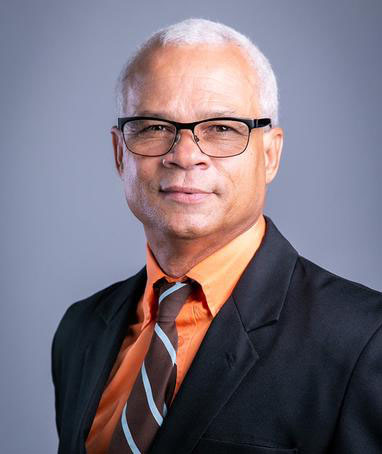By Michaelangelo Jacobus
The only constant in life is change. Greek philosopher Heraclitus is renowned for this statement. Simple but resoundingly true.
The Georgetown Cricket Club (GCC) Ground, better known simply as Bourda, was at its pinnacle, rated as one of the best cricket grounds in the Caribbean. Home to many legends of Guyanese and West Indian cricket, known for its pulsating and enchanting aura back when Test cricket ruled the roost, many cricket fans who were fortunate to attend an international fixture or even a first class game back in the day can boast of fond memories, be it in the Ladies stand, the Rohan Kanhai Stand, the Lance Gibbs Stand, the Mound or in this author’s case, the Schoolboys Stand.
Those fond memories are remnants of an era that is no more, today, as you enter the ground from the Shiv Chanderpaul Drive (formerly New Garden Street), you are hit with a hair-raising sense of ‘what once was’; of the stands mentioned before, only the Rohan Kanhai Stand exists at the Southern end while the Media Centre stands aloof at the opposite end. Two skeletal silhouettes standing there as if to remind one of the ‘heydays’ of Bourda.
The bar and main building which houses the ‘Members Pavillion’ at the Western side of the ground remain popular and attract many members and tourists, who both indulge in nostalgia.
GCC simply is an iconic landmark, a legendary facility, a true testament to the gentleman’s game, one of Guyana’s unofficial national monuments. From its inception in 1884, it stayed home to cricket. Now 140 years later, that is all about to change.
Current GCC President Jonathan Yearwood, recently elected to lead and shape the way forward for the club, holds that Heraclitus quote close to his heart.
In a sit-down with Stabroek Sport, Yearwood laid out an ambitious yet positive blueprint that he, along with the GCC executive, intends to bring to life.
While it is no secret that Bourda and its facilities were neglected since it lost its status as an international cricket ground, the construction of the Providence National Stadium served as the proverbial final ‘nail in the coffin’. As is stated before, change is the only constant.
May 7 of this year will mark 18 years to the day Bourda hosted its final international match, West Indies vs Zimbabwe. In the time since, the ground has played host to inter-county cricket, club cricket, hockey and the odd softball and tapeball games.
Foremost on Yearwood and his team’s agenda, is to spark the evolution of Bourda from a cricket ground, to a multi-sport complex.
He stated; “what happened yesterday doesn’t necessarily mean it will continue to happen tomorrow, we have to be prepared for change. In the advent of Bourda losing international status, we have to deal with that. We have to find ways in which we can survive, in ways that we can keep our name going. I don’t foresee that we will have international cricket back here in Bourda, but the memories will live on”.
While the cricket field and pitch will remain the nucleus of the facility, changes are expected to be made all around. Yearwood told this newspaper that where the old stands once were along with fences around the outfield, are going to be pulled down and the areas leveled out to provide space for other sport facilities. While the club already has a batting net, there are plans for a cricket/baseball cage that would be available for rental while the construction of a mini-football pitch, beach volleyball court and a mini-golf course are also on the cards.
Currently, the outfield and the pitch square are receiving a facelift courtesy of the Government of Guyana. With the country set to host International Cricket Council (ICC) T20I World Cup matches in June, Bourda, even though it’s a shadow of what it once was, has been selected by ICC as a ground to be used as a training/warm-up venue.
Even though works have begun in terms of clearing the areas identified for development, the actual construction of the beach volleyball, mini-gold, baseball/cricket cage and football pitch will not begin until the end of June, when the T20 World Cup is slated to end.
While the work on the outfield and pitch area is being funded by the government, the proposed projects by Yearwood and his executive will be funded by the club itself.
Quizzed on how the executive proposes to fund those developments, Yearwood revealed that the club currently has a couple of avenues of income.
“”We have the rental of the facility. The facility has to be able to upkeep itself. We can’t go out there begging. We can’t go out there soliciting donations all the time. For specific projects, yes we can do that. But the club must be able to sustain itself financially by renting the facilities that we have. We have the upstairs, we have the ground, we have a table tennis room, it can be converted into a small conference room if needed. We have opportunities for people to come and utilise different aspects of the club. We have brought in a pool table at the bar. Pools is a pretty popular game in Guyana. We have seen an increase in people coming to play pool. It has been here for six weeks but more and more people are coming”.
Despite the sparsity of income at the club, Yearwood is optimistic that the current influx of foreigners and expats, an offshoot of the country’s burgeoning oil industry, can herald a new day for GCC and Bourda.
“We recently had an oil company that rented the entire facility for a family fun day and it was a shot in the arm in terms of income generated. I am hoping that we can get more companies involved with the club which will bode well for our ambitions”.
The next chapter of Bourda’s long and storied existence awaits, a new age dawns, and change is inevitable. Can a behemoth from the past evolve and keep astride with time? One can only hope and await, cheering loudly from within.








